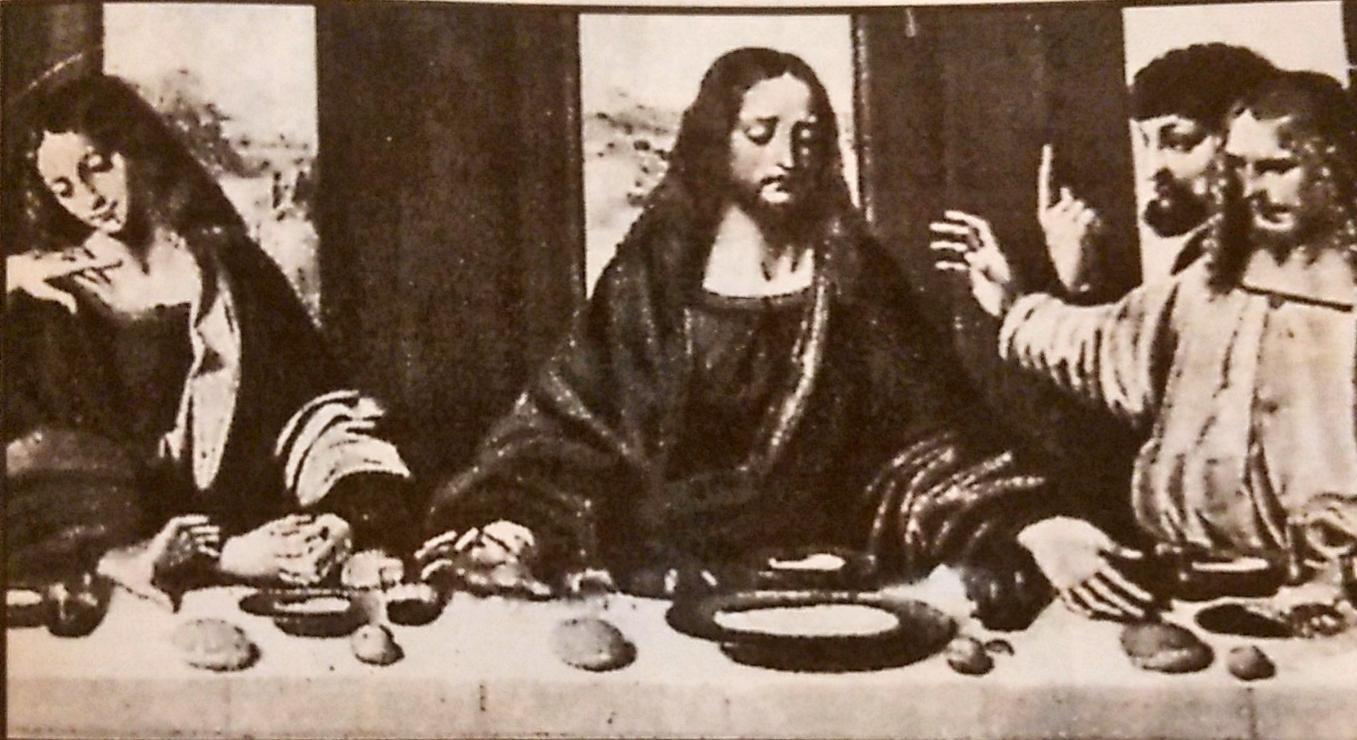By Cherion Drakes
For 21 years of my life I’ve put all my faith in a lie. But I’m not the only one. When I was a child living in Montreal, my whole family would attend the Saturday morning service at the Seventh-Day-Adventist church.
I still remember the way the sanctuary looked with pillars of old polished wood, red carpet and stained glass windows. At both ends of the church was a picture of Jesus Christ. In a white robe, his authoritative image stood in front of a bright light. He had long, straight brown hair, green eyes, a straight nose and thin pink lips. He is white.
Every night, with my hands clasped, this is the man I prayed to. Now, 17 years later, I know the person I’ve always directed my prayers and wished to is not my lord and saviour as I’ve always believed him to be.
Revelations 1:14, 15 says Jesus’ “hairs were like wool … and his feet were like fine brass, as if they were burnt in a furnace.”
Again in the book of Daniel, Jesus is described as having hair like “pure lamb’s wool.” These biblical description suggest a few things. First, that Jesus was anything but white and second, if he lived next door to you chances are we would say he’s black.
So where did the image of the green-eyed, fair-skinned man generally accepted as Christ come from? Probably the most influential depictions of Jesus in the Christian church have come from Renaissance painter Leonardo Da Vinci. In the 16th century pope Alexander of Rome summoned the famous artist to his home. He wanted Da Vinci to paint and sculpt various religious figures, including Jesus Christ. The most famous of these commissioned was Da Vinci’s Last Supper.
Alexander wanted his son, Caesar Borgia, to pose for Da Vinci’s pictures of Christ. Caesar was considered to be “the most handsome and calmly figure in the whole of Rome.”
He was also a known murderer and rumoured to be a rapist.
In a time when religion was the centre of society, it was quite scandalous for the black sheep of the Borgia family to be immortalized as Jesus Christ but no one dared to question what was said by religious figures. So people were forced to worship Caesar’s image as Christ or they would be put to death.
Consequently, not since the church moved to Rome in the 4th century have these ideas been rejected. But in the ‘60s there was a movement in the black community in the U.S. and Canada to re-evaluate the image of a white Jesus. Black preachers are not referring to the biblical description of Christ to make Jesus more identifiable to black youth. Many artists and filmmakers are portraying Jesus and various other biblical characters as being black.
You would think those wishing to worship a more accurate depiction of Jesus would find support from other Christians. After all, there is more proof in the bible to support the image of a black Jesus than the one depicted by European artists of the past.
Instead this has become one of the most controversial religious topics of university seminar discussions, mainstream media and news magazines.
“It’s a completely news step. Our parent can bow down to a white Jesus but they can’t bow to a truthful interpretation because they’re afraid of offending white people,” sas Etienne Grant, a 27-year-old who grew up in the Christian faith but has now converted to Islam. Grant believes a black Jesus is not necessarily an idea for black people only.
“It should be an issue for all people who consider themselves Christian. It’s about truth.”
But the message from the white mainstream is clear — there will be no black Jesus’ hanging on their church walls.
“I have been a Christian for 65 years and all I’ve known is Christ that I see in church and that’s the Christ I will always worship,” says Agnis Skyers, a white Christian.
Many people seem to share these sentiments. Earlier this year, there was a large public outcry regarding the casting of Desi Arnaz Giles, the first black male to play Jesus Christ in the annual “Passion Play” at the Park Performing Arts Centre in Union City, New York.
The controversy over Christ’s skin colour could have been avoided if Christian leaders like Pope Alexander avoided using human representations of religious figures. This is done in other religions like Islam and Judaism.
However, European Christians found that a white Jesus was a very powerful tool during the years of colonization of non-European countries and helped to fulfil their belief in their own racial superiority. If white were to be superior, obviously the Son of God would look like them.
Why is it that Jesus’ love is colour-blind, but our love of Jesus isn’t?
In a perfect world this all wouldn’t matter. But it’s not a perfect world. What I do know is I can no longer accept the glowing image of Jesus I envisioned as a child.










Leave a Reply